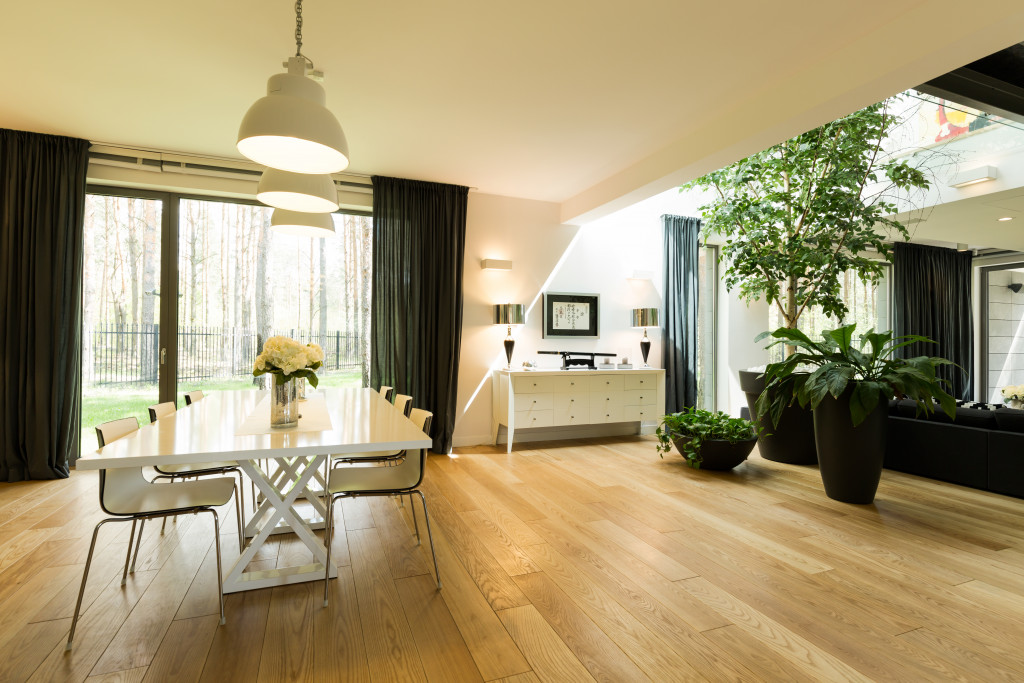- Indoor-outdoor living spaces offer unique living experiences; their incorporation requires careful consideration of home layout and activities.
- Creating a seamless transition involves compatible flooring choices, strategic lighting, and alfresco enclosures for added protection.
- Integrating natural elements like vertical gardens, large potted plants, and water features can enhance indoor-outdoor spaces and provide multiple benefits.
- Incorporating indoor-outdoor living spaces enhances living experiences, proving to be a worthwhile investment in home design.
Incorporating indoor-outdoor living spaces in your home design can completely transform the way you experience your home. This style of home design seamlessly blurs the lines between indoor and outdoor spaces, creating a harmonious transition between the two. Whether you are a fashion and lifestyle enthusiast or a modern homeowner, creating an indoor-outdoor living space can provide you with an exceptional living experience. Here’s how to incorporate these living spaces in your home design and the benefits that come with it.
Consider the Layout of Your Home
The layout of your home will play a significant role in your ability to incorporate indoor-outdoor living spaces. Focus on areas of your home where you can create a seamless flow between your indoor and outdoor living spaces.
Consider installing floor-to-ceiling glass sliding doors or connect your indoor and outdoor spaces with a covered walkway to bring the two living areas together. When planning your indoor-outdoor living space, also consider what activities you will be engaging in.
If you are an entertainer, consider outdoor cooking facilities or a built-in bar area. If your space is intended for relaxation, a comfortable sectional and fire pit may be just what you need. Add versatility to your outdoor living space by including retractable screens to manage bugs or a fireplace to provide warmth on chilly nights.

Create a Seamless Transition
To create a seamless transition between your indoor and outdoor living spaces, start by selecting furnishings that are designed to ensure continuity between the two spaces. You should be mindful of the colors, textures, or themes used within each area when selecting your materials. Here are some other things to prioritize:
Focus on the Flooring Choice
Creating a seamless transition between indoor and outdoor living spaces begins with choosing the right flooring materials. Consider selecting floor finishes that can easily be carried through from your indoor space to your outdoor space. Options include tiles, natural stone, or even polished concrete. Adding similar or coordinating colors in both spaces can also help enhance the connection between the two areas.
Don’t Forget About Lighting
Lighting plays a significant role in creating the right ambiance for your indoor-outdoor living space. Strategically placed outdoor lighting can provide an inviting and warm atmosphere for guests while also improving the safety and security of your home. In addition to highlighting landscaping features, consider incorporating statement lighting fixtures that provide both form and function.
Invest in Alfresco Enclosures
For added protection, consider installing beautiful alfresco enclosures. A great way to extend the use of your outdoor living space year-round, alfresco enclosures can provide an extra layer of insulation against weather conditions and help protect your furnishings. Additionally, they are perfect for entertaining guests while still providing a sense of openness and airiness due to their transparent and lightweight characteristics.

Bring in the Natural Elements
Incorporating natural elements into your home design can help create a fluid connection between your indoor and outdoor living spaces. This is because natural elements such as plants, trees, and flowers offer an array of benefits. As well as providing a calming atmosphere and aesthetic appeal, they can also help purify the air in your home. Here are some ideas:
Elevate Your Space with Vertical Gardens
Vertical gardens are an innovative solution for those who wish to incorporate greenery into their indoor-outdoor living spaces but are constrained by space. These gardens can range from wall-mounted planters to self-sustaining systems, each offering a unique aesthetic that can enhance your living area. Apart from their aesthetic appeal, vertical gardens can also improve air quality, provide natural insulation, and reduce noise levels.
Enhance Your Indoor-Outdoor Living Space with Large Potted Plants
Large potted plants can serve as natural dividers between indoor and outdoor spaces while still maintaining a sense of coherence and continuity. They can be strategically placed to frame views or conceal less desirable aspects of your outdoor area. Besides, these plants can add a touch of nature to your living spaces, creating a calming and restful atmosphere. Choose from a variety of plants, such as palms, ferns, or ficus, that are suitable for both indoor and outdoor conditions.
Incorporate Water Features for a Tranquil Ambience
Water features are another excellent addition to your indoor-outdoor living space. They can create a tranquil and peaceful ambiance, helping to reduce stress and promote relaxation. Whether it’s a small fountain, a pond, or a man-made waterfall, water features can serve as a focal point in your living space, drawing attention and inviting interaction. Additionally, the soothing sounds of water can mask unwanted noise from the surroundings, providing a serene escape within your home.
Incorporating indoor-outdoor living spaces in your home design can elevate your living experience. Follow the tips outlined in this blog post to create a seamless transition between your indoor and outdoor living spaces, allowing you to fully embrace the natural environment around you. Whatever kind of homeowner you are, incorporating these living spaces is a worthwhile investment that can dramatically enhance your home life.
